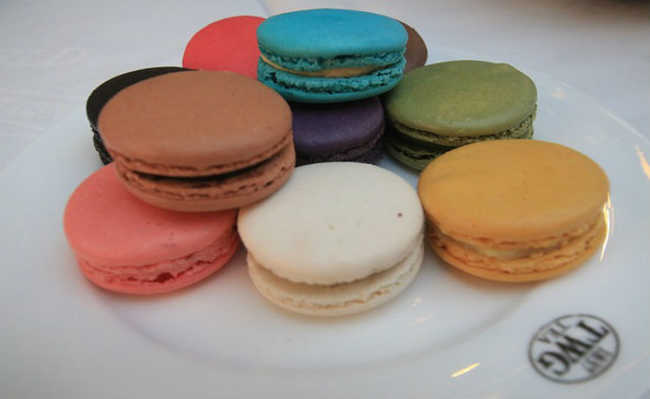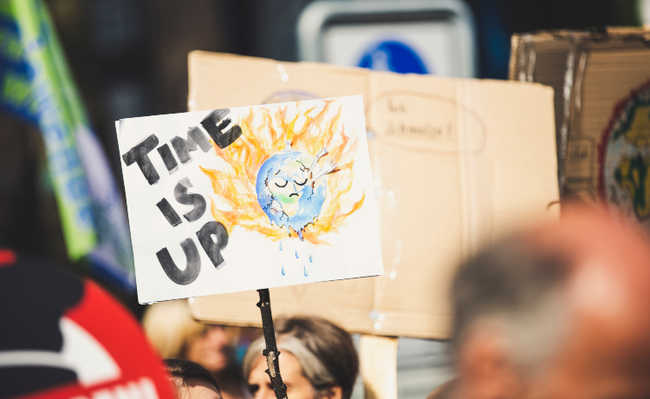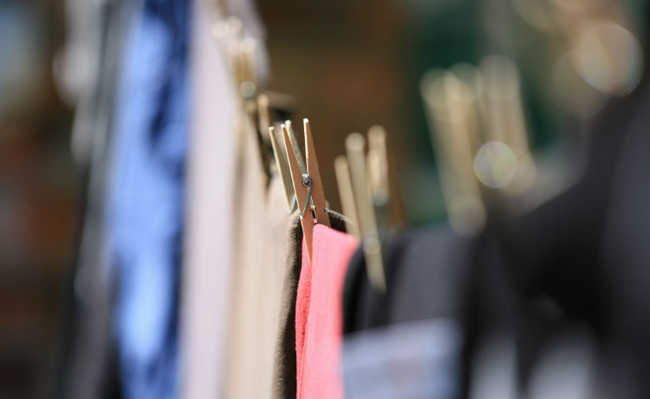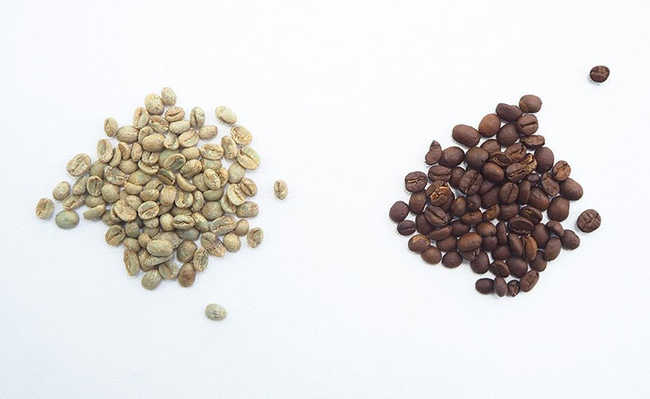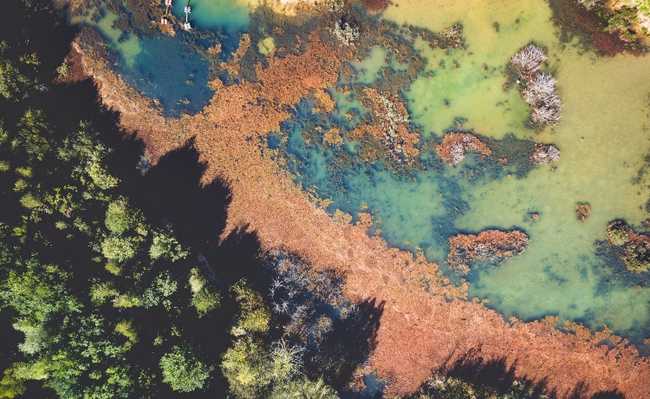Synthetic biology: what it is and its relationship to the circular economy
Learn more about synthetic biology, the science capable of synthesizing organisms to produce what we want, and how it can relate to the environment

Bill Oxford image in Unsplash
Spiders and insects producing the clothes you wear? It sounds strange, but there are already companies doing this. Researchers have studied the spiders' DNA and analyzed how they produce silk fibers. Thus, they managed to reproduce in the laboratory a fiber made from water, sugar, salt and yeast that, under the microscope, has the same chemical characteristics as the natural one. There is also already "cow's milk" that did not come from the cow and even a filament stronger than steel produced from the viscous substance of a fish. These are all examples of application of synthetic biology.
synthetic biology
At the end of the 20th century, a biotechnological revolution began, in which new strands of biology emerged. Synthetic biology is an area that has gained prominence since it officially appeared in 2003, and has its main application possibilities in industry, the environment and human health.
The definition of synthetic biology is given by the integration of different areas of research (chemistry, biology, engineering, physics or computer science) with the construction of new biological components, also involving the re-design of natural biological systems that already exist. Using recombinant DNA technology (a DNA sequence from different sources) is not a challenge for synthetic biology, as it already occurs; the bet is to design organisms that meet the current needs of humanity.
An ally of synthetic biology is biomimicry, which seeks solutions to our needs inspired by nature. With synthetic biology it will be possible to recreate entire systems, not just a part.
It was from 2010 that synthetic biology gained notoriety. That year, American scientist John Craig Venter managed to accomplish something ingenious: he created the first artificially-lived laboratory organism in history. He did not create a new form of life per se, but "printed" the DNA created from digital data, and introduced it into a living bacterium, transforming it into the synthetic version of the bacterium. mycoplasma mycoides. Venter claims that this was the "first living organism whose parent is a computer".
Today there is a database available on the internet, with thousands of DNA “recipes” to be printed, called biobricks. Bacteria with a synthetic genome act in exactly the same way as their natural version, and that's how we're able to reprogram bacteria and make them act the way we want them to in order to produce certain materials, like silk and milk.
The company responsible for the production of silk fibers from the observation of spiders mentioned at the beginning of this text is Bolt Threads. The artificial "cow's milk" is Muufri, created by two vegan bioengineers. It is produced on the same principles as beer and is a mixture of ingredients (enzymes, proteins, fats, carbohydrates, vitamins, minerals and water). This "synthetic milk" has the same taste and nutritional characteristics as the original. The hyper-resistant filament is the work of the Benthic Labs laboratory, which manufactures various materials, such as ropes, packaging, clothing and health products, through this filament from the hagfish (a species of fish also known as myxini). The fish's DNA code is introduced into the bacterial colony, which begins to synthesize the filament. It is ten times thinner than a strand of hair, stronger than nylon, steel, and has absorbent and antimicrobial properties.
If we are able to recreate such “natural” resources as studies advance, synthetic biology can replace the use of some raw materials. Thus, this technology can be introduced as a factor of great importance to the concept of circular economy, as is the case of technologies that absorb oil spills or bacteria that eat plastic.
Incorporating synthetic biology into the circular economy

Rodion Kutsaev image in Unsplash
The circular economy is a structural model that represents a closed cycle, in which there is no loss or waste. The three principles of the circular economy, according to the Ellen Macarthur Foundation, are:
- Preserve and increase natural capital, controlling finite stocks and balancing the flows of renewable resources;
- Optimize the production of resources, circulating products, components and materials of the highest level of utility at all times, both in the technical and biological cycles;
- Encourage system efficiency, revealing negative externalities and excluding them in projects.
We currently live in a linear production system. We extract, produce, consume and dispose of. But natural resources are finite and we must conserve them - this is the first principle of the circular economy.
With synthetic biology, in the future, we may have the ability to replace the extraction of certain natural resources. In addition to preserving the environment, we will be saving a huge amount of energy and moving closer to the cradle-to-cradle model (craddle to craddle - system in which the idea of waste does not exist).
Replacing materials
The ability to control bacteria and make them work for us can create different alternative inputs or processes. For example: the creation of new biodegradable materials that can be integrated back into the cycle, now serving as nutrients for other beings, as fertilizer for crops.
There are already some types of polymers created by synthetic biology, such as plastic made from the fermentation of sugar and naturally degraded with microorganisms in the soil. Other materials can also be used to produce bioplastic, such as corn, potatoes, sugarcane, wood, among others. There are also packages made of mushroom mycelium (image below) that can be molded and replace Styrofoam.

Image: Biodegradable packaging made by Ecovative Design using mycelium biomaterial from agricultural waste by mycobond is licensed under (CC BY-SA 2.0)
Other applications that are being evaluated around the world are still in the development stage... Synthetic rubber today is entirely derived from petrochemical sources, so researches are trying to create tires made from BioIsoprene. Plant enzymes are introduced into the microorganism by gene transfer, thus producing isoprene. In Brazil, a method to transform methane into biodegradable plastic using microorganisms under controlled conditions is being studied. Chemicals, acrylic, vaccine development, agricultural waste treatment, antibiotics, among others, are examples of synthetic biology products that can be re-inserted into the stream, creating a cyclic system.
To include the second principle of circular economy, synthetic biology can create materials that are more resistant and last longer, not requiring constant repairs, replacement of parts, or even the purchase of new products very often. Materials are made that can be easily reused in other processes, to create new products, or that are easier to be recycled. If all this hypothetical material had these conditions, they would not become waste, with a decrease in pollution and disposal in landfills, that is, they would continue to circulate for use.
the other side of the story
This technology is still very recent and with the discovery of more and more uses and materials that can be replaced by synthetic ones, the extraction of resources from the environment decreases, allowing it to recover naturally. By restoring the environment's resilience, balance is restored and we will be able to live on a more sustainable planet.
But like everything good, there are some odds. This scientific branch, which is also considered extreme genetic engineering, needs official opinions. Products must have detailed regulations and recommendations to avoid any chance of error, so that the risks and benefits become evident before they are commercialized. As the initial experiments in synthetic biology were economically very promising, there are not many restrictions yet, which can be a problem.
One of the negative effects that can occur is the loss of biodiversity with the creation of artificial microorganisms that can act unpredictably in the environment. For example: if intentionally or not the release of a synthetic micro-organism, sometimes unheard of in nature, it can behave as an invader and spread, disrupting entire ecosystems, and it is impossible to “hunt” and remove all the bacteria from the environment.
On the social issue, poor countries can suffer much more than developed countries. Using microorganisms for mass production of a certain product can replace entire natural crops, leaving millions of families unemployed. However, there will be a need for monocultures to feed the bacteria, as their energy source is biomass.
On large scales, certain products will require a lot of organic matter, such as sugar. Possibly, unemployed families will start planting only sugarcane (biofuels have already brought major changes in land use), which can impact access to land, water and increased use of pesticides, among others.
All these issues are directly related to bioethics. The power of synthetic biology is enormous. Designing organisms the way we want makes them unpredictable, so scientists and society must use this power responsibly and safely, with support from governments. This is always a tricky question.
All of these positive or negative factors can help or hurt the circular economy and our planet. But there is still a lot to debate and a lot of knowledge to be raised on the subject. There is no denying that synthetic biology is a trend for the future, but the most important thing is to define how this advanced technology will be applied.
Check out a critical video on the consequences of synthetic biology.


